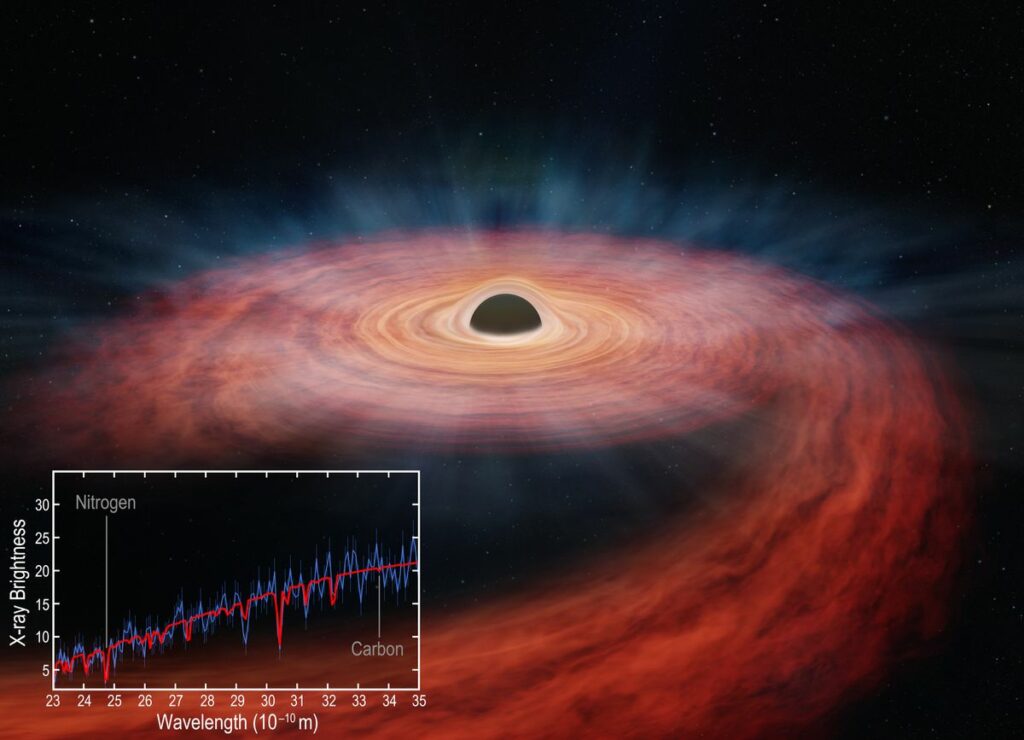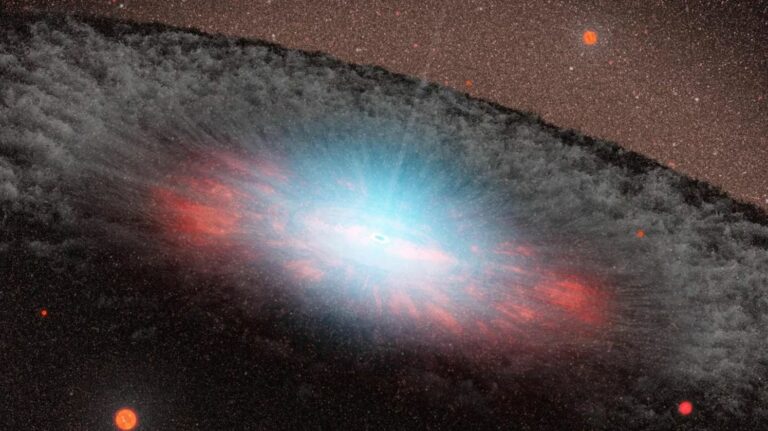A black hole ‘assassin’ ripped a star to shreds and left its guts strewn about the galaxy
In a way, stars are like doughnuts: You have to rip them apart to see what’s inside. Luckily for astronomers, sometimes the cosmos does just that — when a black hole shreds a star that passes by too closely in a violent spectacle called a tidal disruption event (TDE). (The phenomenon is more whimsically known as “spaghettification”).
In new research published in The Astrophysical Journal Letters, astronomers used a TDE to precisely measure the amounts of certain elements — namely, nitrogen and carbon — around a black hole to infer that a huge star three times bigger than the sun was destroyed there. This is the opposite problem of guessing the doughnut’s filling; instead, you see a smear of raspberry and powdered sugar and infer what came before the chaos.
The new study is a detailed reanalysis of X-ray observations from a particularly spectacular TDE known as ASASSN-14li, featuring the most massive star astronomers have ever seen destroyed by a black hole. When it was discovered in 2014, ASASSN-14li was the closest and brightest TDE to Earth in the past decade.
“ASASSN-14li is exciting because one of the hardest things with tidal disruptions is being able to measure the mass of the unlucky star, as we have done here,” Enrico Ramirez-Ruiz, an astrophysicist at University of California, Santa Cruz and co-author of the new work, said in a statement.

TDEs shine bright in the X-ray spectrum, so to peer at these violent events, the astronomers used two X-ray telescopes: NASA’s Chandra X-ray Observatory and the European Space Agency’s XMM-Newton. They recorded detailed information and observations about ASASSN-14li, thus enabling this astro-forensic analysis.
“These X-ray telescopes can be used as forensic tools in space,” study co-author Brenna Mockler, an astronomer at Carnegie Observatories and UCLA, said in the statement. “The relative amount of nitrogen to carbon that we found points to material from the interior of a doomed star weighing about three times the mass of the Sun.”
Scientists think these events with gigantic stars are rare, too, so having such detailed information on one is exciting, the team said. “Observing the destruction of a massive star by a supermassive black hole is spellbinding because more massive stars are expected to be significantly less common than lower-mass stars,” Ramirez-Ruiz said.
A newly observed TDE nicknamed “Scary Barbie” might soon take the title for the biggest TDE. But for now, ASASSN-14li still holds the trophy — and it is revealing the forensic fingerprints of its stellar victims.
Source:LiveScience
Do not forget to share your opinion with us to provide you with the best posts !




0 Comments